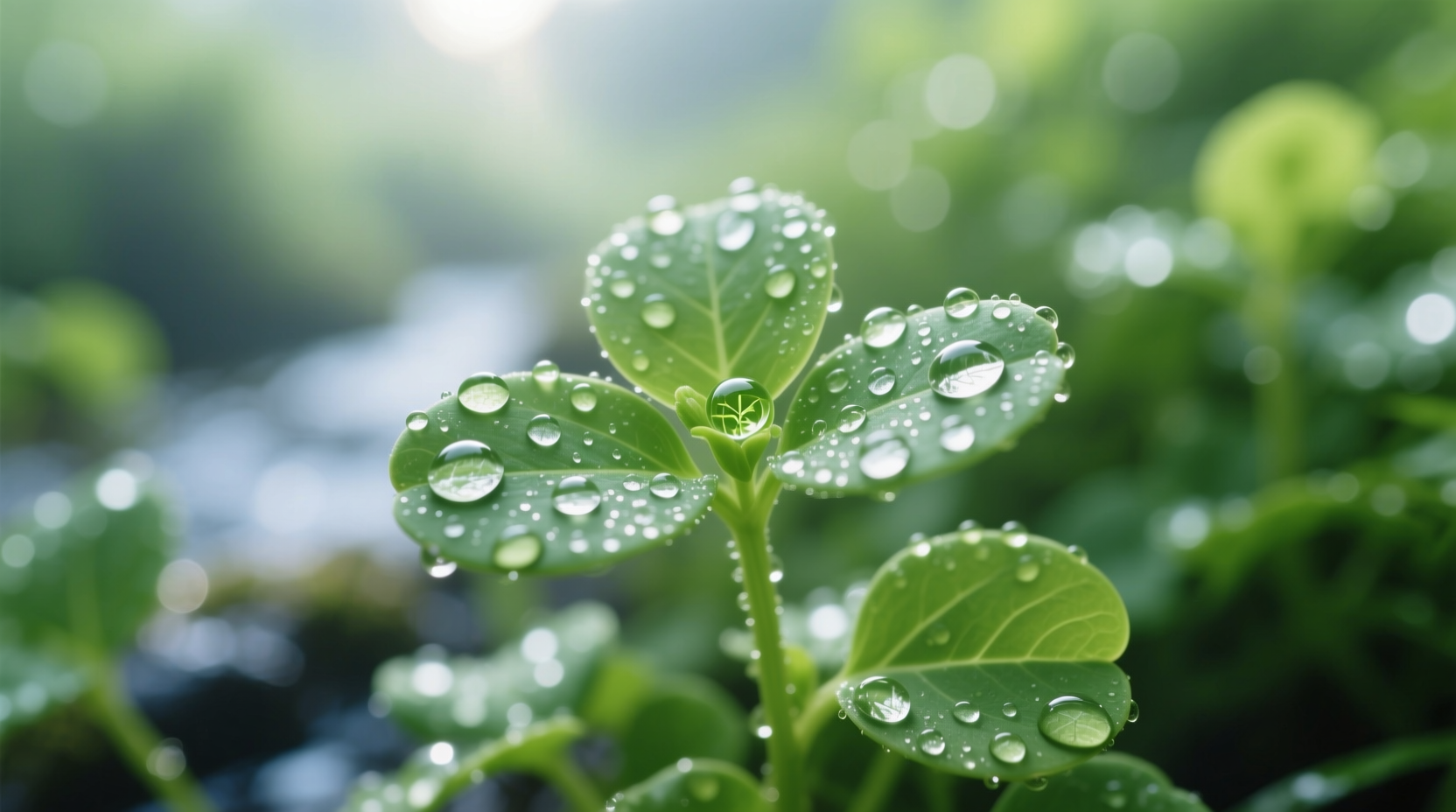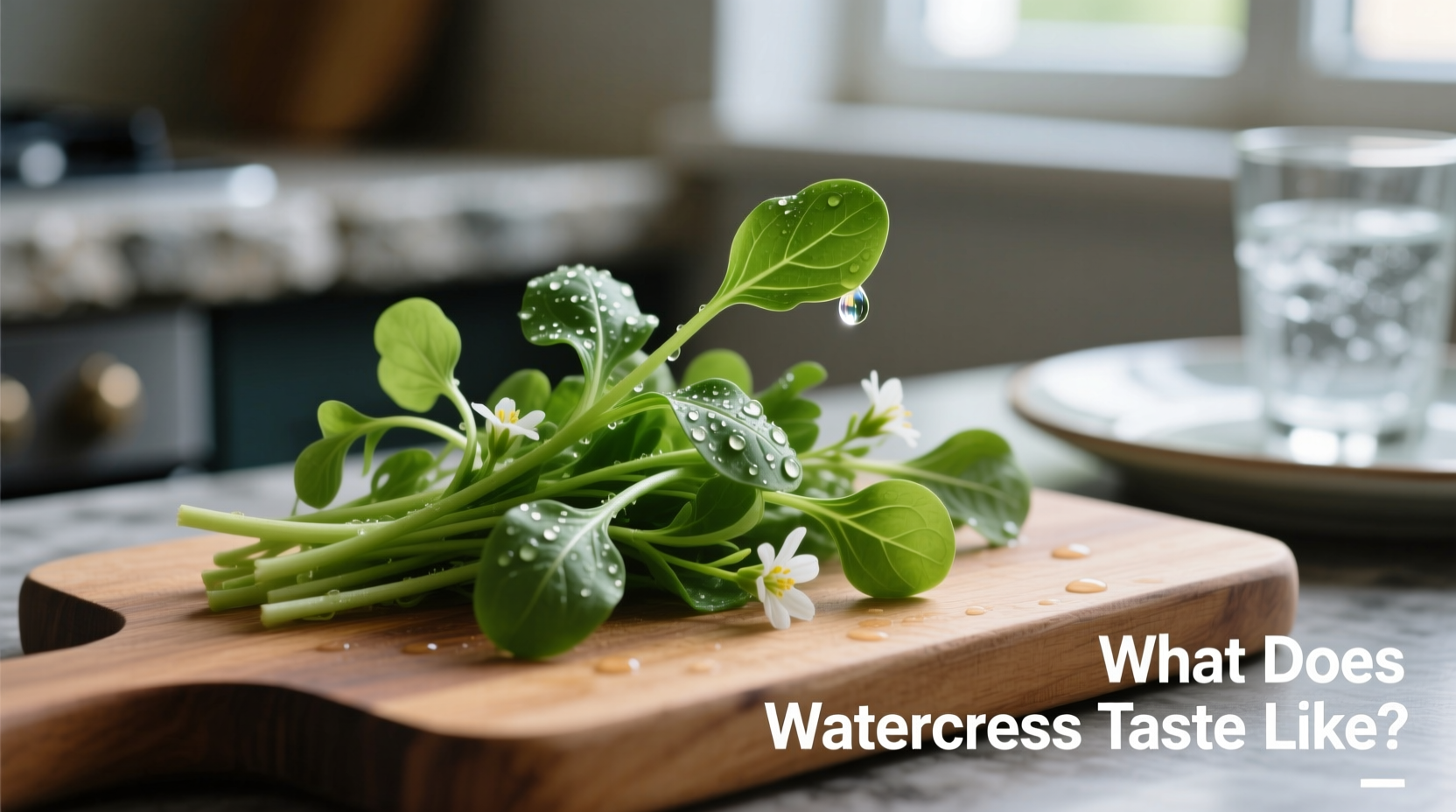Ever wondered what gives watercress that unmistakable kick that makes your palate tingle? This humble aquatic green offers one of the most distinctive flavor experiences among edible plants. Understanding watercress's taste profile helps you harness its culinary potential whether you're crafting a sophisticated salad or adding depth to soups and sandwiches.
The Science Behind Watercress's Signature Flavor
Watercress's characteristic bite comes from glucosinolates—sulfur-containing compounds that serve as the plant's natural defense mechanism. When watercress leaves are damaged through cutting or chewing, an enzyme called myrosinase activates these compounds, producing pungent isothiocyanates. This chemical reaction creates that familiar peppery sensation similar to horseradish or wasabi, but more delicate.
According to research published in the Journal of Agricultural and Food Chemistry, watercress contains significant levels of phenethyl isothiocyanate (PEITC), which contributes to both its distinctive flavor and potential health benefits. The concentration of these compounds varies based on growing conditions, harvest time, and freshness.
Watercress Flavor Compared to Other Greens
| Green | Peppery Intensity | Bitterness Level | Texture | Best Culinary Uses |
|---|---|---|---|---|
| Watercress | High | Moderate | Crisp, tender stems | Salads, sandwiches, soups, pesto |
| Arugula | Moderate-High | Low-Moderate | Delicate leaves | Salads, pizza topping, pasta |
| Mustard Greens | Moderate | High | Sturdy, fibrous | Sauteed, braised, in stews |
| Spinach | None | Very Low | Soft, tender | Raw salads, cooked dishes, smoothies |
| Kale | Low | Moderate-High | Thick, tough | Sauteed, massaged salads, chips |
This comparison shows why watercress occupies a unique position in the green spectrum. While arugula shares some peppery qualities, watercress delivers a more pronounced bite with distinctive aquatic freshness. Unlike mustard greens which become milder when cooked, watercress maintains some of its characteristic flavor even after heating.
How Growing Conditions Affect Watercress Flavor
The taste of watercress isn't static—it changes based on several factors:
- Water source: Traditionally grown in clean, flowing spring water, watercress develops a cleaner, crisper flavor. Commercially grown varieties in controlled environments may have a milder taste.
- Season: Spring-harvested watercress tends to be more tender with a balanced peppery note, while summer crops can become more pungent and slightly bitter.
- Freshness: Watercress rapidly loses its signature bite after harvest. Within 24 hours, the peppery compounds begin to degrade, resulting in a milder, sometimes slightly musty flavor.
- Soil composition: Though grown in water, the mineral content of the water affects flavor. Higher calcium levels produce crisper, more robust-tasting watercress.
For the most authentic watercress experience, seek out locally grown varieties harvested within 12 hours. The USDA Agricultural Research Service notes that watercress begins losing its volatile compounds immediately after harvest, with significant flavor degradation occurring within 48 hours.
Raw vs. Cooked: How Heat Transforms Watercress Flavor
Many people only experience watercress raw in salads, but cooking dramatically alters its flavor profile:
Raw watercress delivers that signature peppery bite most intensely. The crisp texture and refreshing coolness make it ideal for:
- As a sandwich topping (especially with egg or chicken salad)
- In composed salads with sweet elements like pears or apples
- As a garnish for soups and main dishes
- Blended into sauces and pestos
Cooked watercress undergoes significant flavor transformation. The heat deactivates the myrosinase enzyme, reducing the peppery punch by up to 70%. What remains is a more subtle, spinach-like flavor with lingering hints of its original character. Cooking methods affect the outcome:
- Quick sautéing preserves some texture and a mild peppery note
- Steaming maintains more nutrients but significantly reduces pungency
- Adding to soups at the end preserves some bite while mellowing the overall flavor

Practical Pairing Guide: Making the Most of Watercress Flavor
Understanding watercress's flavor helps you create balanced dishes where its distinctive taste enhances rather than overwhelms:
Perfect Flavor Companions
Cooling elements: The peppery heat of watercress pairs beautifully with cooling ingredients that provide contrast:
- Avocado (adds creaminess that tempers the bite)
- Cucumber (enhances the refreshing quality)
- Goat cheese or feta (salty tang balances the pepper)
- Yogurt-based dressings (mellows the intensity)
Sweet counterpoints: Sweet flavors create an excellent balance with watercress's peppery notes:
- Pear or apple slices (fresh or roasted)
- Balsamic reduction (adds sweet-tart complexity)
- Dried cranberries or cherries
- Honey-mustard dressings
When Watercress Flavor Becomes Too Much
While watercress's distinctive taste is desirable in many applications, there are situations where its intensity might overwhelm a dish:
- When serving to children or those sensitive to peppery flavors
- In delicate seafood dishes where subtlety is key
- When creating mild green smoothies
- For extended salad preparations where bitterness intensifies over time
In these cases, consider using watercress sparingly mixed with milder greens like butter lettuce or spinach. Alternatively, blanching watercress briefly in boiling water then shocking in ice water reduces its peppery intensity while preserving some nutritional value.
Watercress in Global Cuisines
Watercress's unique flavor has been utilized across cultures for centuries:
- British cuisine: A staple in traditional watercress soup and as a sandwich filling since Victorian times
- Chinese cooking: Used in stir-fries and soups, particularly in Cantonese cuisine where it's valued for both flavor and medicinal properties
- Middle Eastern dishes: Incorporated into fattoush salad and other fresh preparations
- Mexican cooking: Sometimes used in place of cilantro in salsas for those who dislike cilantro's soapy note
The historical use of watercress across diverse culinary traditions demonstrates how chefs have learned to work with its distinctive flavor profile. According to culinary anthropologists at the University of Oxford, watercress was one of the first cultivated greens in Europe, with records dating back to ancient Greece where it was valued both as food and medicine.
Tasting Watercress Like a Professional
To fully appreciate watercress's complex flavor profile, follow this professional tasting approach:
- Examine the appearance: Vibrant green leaves with crisp, white stems indicate peak freshness
- Smell the bunch: Fresh watercress has a clean, slightly peppery aroma with aquatic notes
- Take a small bite of a single leaf: Notice the initial crispness followed by the gradual development of peppery heat
- Pay attention to the aftertaste: High-quality watercress leaves a clean, refreshing finish rather than bitterness
- Compare raw versus lightly dressed: Notice how acidity from dressings can enhance or mellow the peppery notes
This mindful tasting approach helps you understand watercress's flavor journey from first bite to aftertaste, making it easier to determine how best to incorporate it into your cooking.
Storing Watercress to Preserve Flavor
Proper storage is crucial for maintaining watercress's distinctive taste:
- Store in the refrigerator with stems in a small amount of water (like cut flowers)
- Cover loosely with a plastic bag to maintain humidity
- Change water daily to prevent bacterial growth
- Use within 3-4 days for optimal flavor (peppery compounds degrade over time)
Food science research from Cornell University shows that storing watercress at 32-34°F (0-1°C) with high humidity preserves its volatile compounds significantly longer than room temperature storage. The study found that refrigerated watercress maintained 85% of its original glucosinolate content after 72 hours, while room temperature samples lost over 60% of these flavor compounds.
Watercress Taste FAQ
Why does watercress taste spicy like pepper?
Watercress contains natural compounds called glucosinolates that transform into pungent isothiocyanates when the plant cells are damaged. This chemical reaction creates the peppery sensation similar to what you experience with horseradish or wasabi, but more delicate. The intensity varies based on freshness and growing conditions.
Is watercress supposed to taste bitter?
Watercress has a naturally slightly bitter note alongside its predominant peppery flavor. This bitterness should be mild and balanced, not overwhelming. Excessive bitterness usually indicates older watercress or improper storage. Fresh watercress should have a clean, refreshing finish rather than lingering bitterness.
How can I reduce watercress's strong flavor?
To mellow watercress's peppery bite, try these approaches: pair it with creamy elements like avocado or yogurt, combine with sweet ingredients like pears or apples, use a honey-based dressing, or blanch briefly in boiling water then shock in ice water. Mixing watercress with milder greens like butter lettuce also helps balance the flavor.
Does cooked watercress taste different from raw?
Yes, cooking significantly changes watercress's flavor. Heat deactivates the enzyme that creates the peppery compounds, reducing the spicy bite by up to 70%. Cooked watercress develops a milder, more spinach-like flavor with subtle earthy notes while still retaining some of its distinctive character, especially when added at the end of cooking.
Why does my watercress taste different from store to store?
Watercress flavor varies based on growing conditions, harvest time, and freshness. Locally grown watercress harvested within 12 hours delivers the most intense peppery flavor. Commercial varieties may be milder due to longer transport times. Water source, season, and even time of day harvested all contribute to flavor differences between batches and suppliers.











 浙公网安备
33010002000092号
浙公网安备
33010002000092号 浙B2-20120091-4
浙B2-20120091-4